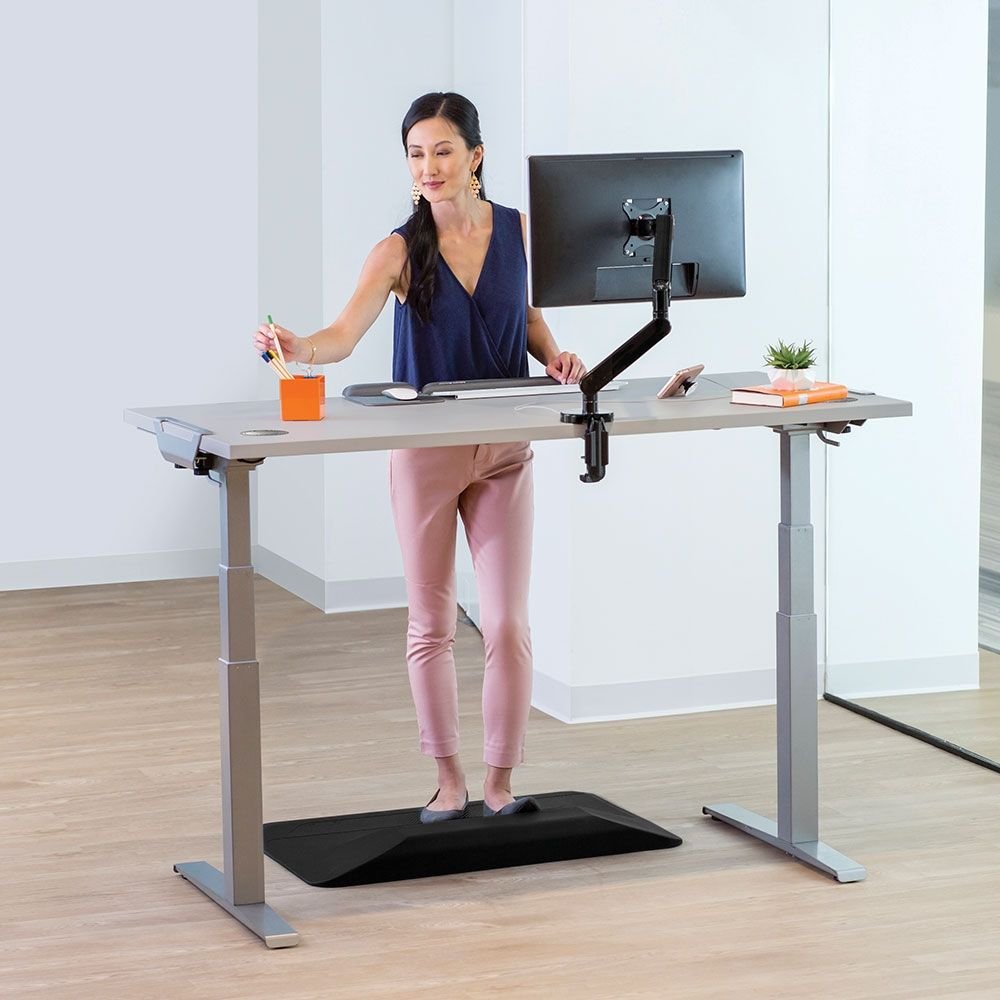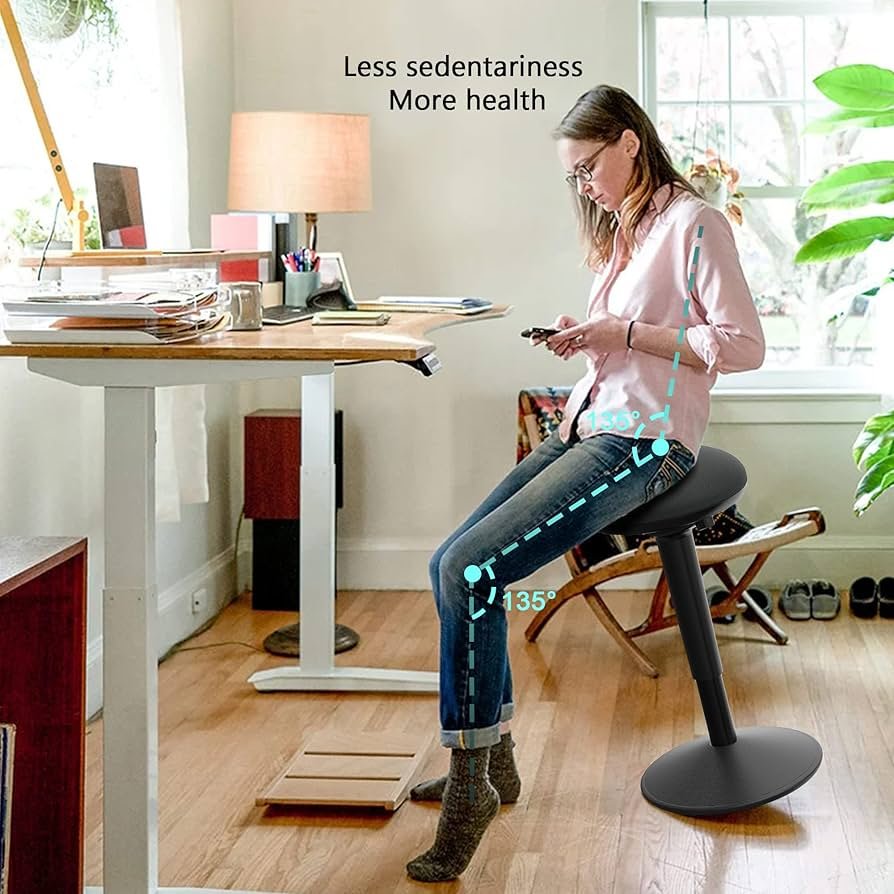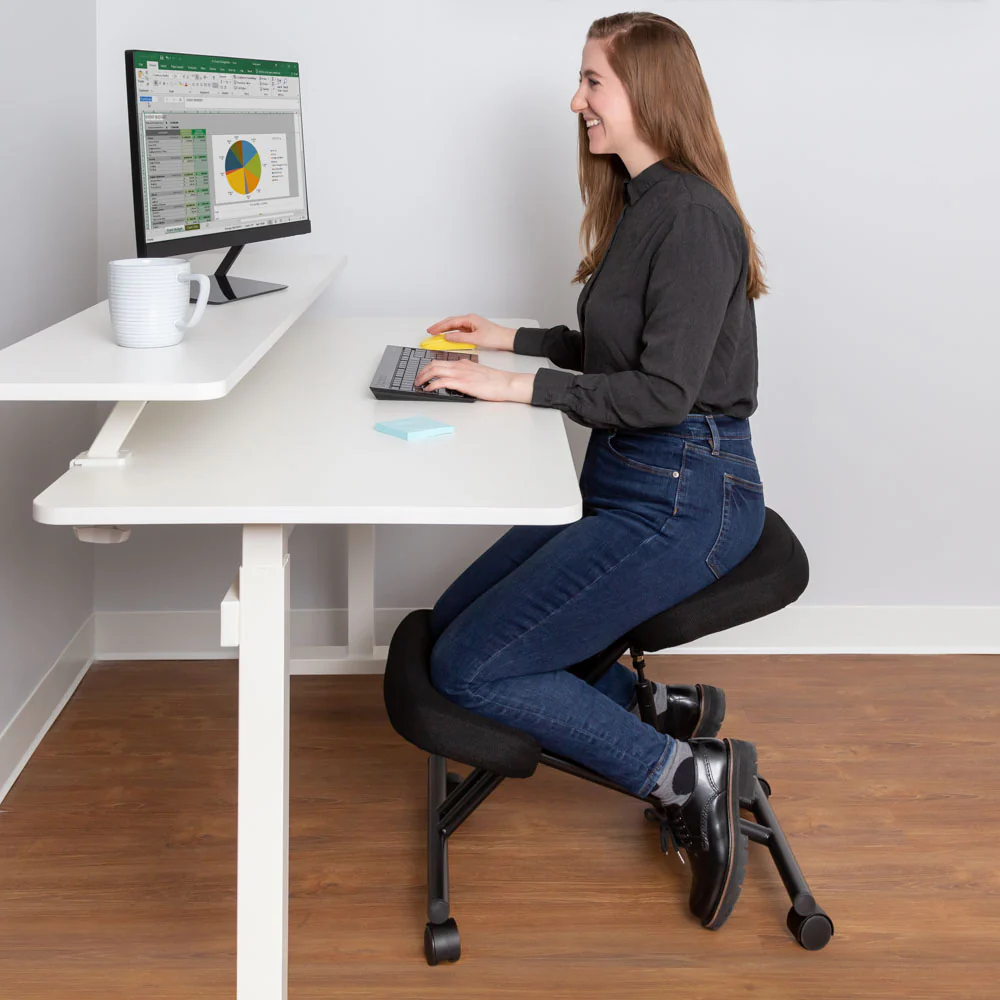Standing desks have seen a significant rise in popularity across various work environments. This surge is attributed to the numerous benefits emphasized by both manufacturers and health professionals. Standing desks are designed to promote a more active lifestyle by enabling individuals to stand while working, contrasting with the traditional sedentary desk setup.
One of the primary benefits of using a standing desk is improved posture. Health experts frequently highlight how prolonged sitting can lead to slouching and the subsequent development of musculoskeletal problems. By encouraging an upright position, standing desks can help alleviate these issues and contribute to better spinal alignment.
In addition to ergonomic advantages, standing desks are said to augment energy levels. Employees often report feeling more alert and less fatigued when they incorporate periods of standing into their daily routine. This increased alertness can enhance productivity and overall workplace efficiency.
Moreover, standing desks are lauded for their potential role in reducing the risk of various health complications. Extended sitting has been linked to increased risks of obesity, cardiovascular diseases, and Type 2 diabetes. The act of standing can counteract these risks by promoting better circulation and encouraging slight movements throughout the day.
This blog post will delve into the pivotal question: Is it feasible and healthy to stand all day at a standing desk? While standing desks offer numerous benefits, understanding the balance between standing and sitting is crucial for optimizing health and well-being in a professional setting.
Health Benefits of Using a Standing Desk
The health benefits of using a standing desk are both significant and well-documented, appealing to those seeking a more dynamic and health-conscious work environment. Numerous research studies and expert opinions highlight the positive impacts of transitioning from a traditional sitting desk to a standing desk.
One of the foremost benefits is the alleviation of back pain. Prolonged sitting has been strongly linked to the development of back and neck pain, as per the findings of a study published in the “British Journal of Sports Medicine”. By incorporating periods of standing, these issues can be markedly reduced. Improved posture and reduced strain on the lumbar spine are areas in which standing desks have shown considerable promise.
In terms of cardiovascular health, standing desks contribute to better blood circulation. Prolonged sitting can impede proper blood flow, leading to potential cardiovascular issues. A study from the American Journal of Public Health indicates that standing more frequently throughout the day can diminish the risk of heart disease and general circulatory problems.
Moreover, standing desks contribute to increased calorie burn. According to Mayo Clinic’s research, standing burns more calories than sitting. On average, a person burns approximately 50 more calories per hour standing instead of sitting. Over time, this added caloric expenditure can aid in weight maintenance and prevent obesity.
Mental health also reaps benefits from standing desk usage. Enhanced energy levels and reduced feelings of sluggishness have been reported in users. For instance, a study published in the “Journal of Occupational and Environmental Medicine” found that employees using standing desks experienced lower levels of stress and fatigue than their sitting counterparts, thereby fostering a more positive and productive working environment.
User testimonials mirror these findings, with individuals expressing noticeable improvements in wellbeing and productivity. For example, a user from a tech company reported a significant reduction in back pain and an overall more engaging workday. Another user highlighted the motivational boost of intermittently standing and how it aided in maintaining focus and energy throughout the day.
In essence, the health advantages of employing a standing desk are multifaceted, offering both physical and mental benefits that can enhance one’s overall quality of life.
Potential Risks of Prolonged Standing
While standing desks have gained popularity for their potential health benefits, prolonged standing does present several risks that should not be overlooked. Scientific research has associated extended periods of standing with various health concerns. For instance, a study published in the journal “Ergonomics” found that individuals who stood for extended periods were more likely to develop varicose veins. These veins occur when blood pools in the legs due to inadequate circulation, leading to pain, swelling, and, in severe cases, more serious vascular issues.
Another significant concern is muscle fatigue. Prolonged standing can cause muscles, particularly those in the lower back and legs, to become fatigued more quickly. This fatigue results from the need to maintain a fixed posture, which can strain muscles over time. According to a report by the Mayo Clinic, standing for long durations places continuous pressure on the spine and lower extremities, which can lead to chronic muscle pain if not addressed properly.
Joint problems are also frequently cited as a consequence of standing for long periods. Standing for hours puts undue stress on the joints in the knees, hips, and feet. Dr. Karen DeSalvo, a public health expert, notes that the compressive forces on these joints can accelerate wear and tear, increasing the risk of developing osteoarthritis in the long term.
Moreover, joint discomfort can lead to compensatory movements or postures, potentially resulting in misalignment issues that exacerbate the problem.
Experts generally agree that standing without taking breaks can be detrimental. Dr. Alan Hedge, a professor of ergonomics at Cornell University, advises against standing for more than 1-2 hours without a break. He recommends adopting a sit-stand routine, alternating between sitting and standing every 30 minutes to mitigate these risks. This balanced approach not only helps in reducing the strain on muscles and joints but also promotes better circulation, preventing conditions like varicose veins.
Ideal Standing-Sitting Balance
Achieving the right balance between standing and sitting while using a standing desk is crucial for maintaining optimal health and productivity. Prolonged sitting has been linked to various adverse health effects, including increased risk of cardiovascular diseases, type 2 diabetes, and musculoskeletal issues.
Conversely, standing for extended periods can also lead to discomfort, fatigue, and issues such as varicose veins. Therefore, integrating both standing and sitting into your daily routine is essential.
Health professionals and ergonomic experts suggest following a sit-stand ratio to mitigate the risks associated with prolonged periods of either activity. A commonly recommended ratio is the 1:1 or 1:2 approach. For example, for every 30 minutes of sitting, one should stand for at least 30 minutes to balance both positions.
Alternatively, some experts advocate for a slightly more conservative ratio, recommending standing for 15-20 minutes for every 30-60 minutes of sitting. This approach helps to ensure movement and encourages breaking up long periods of inactivity.
To implement these guidelines effectively, it’s helpful to set reminders or use adjustable desks that can easily transition between sitting and standing positions. Some prefer using time-tracker apps to maintain their sit-stand schedule. Furthermore, embracing small movements, such as pacing, stretching, and shifting weight from one leg to another, can significantly enhance the benefits of alternating between standing and sitting.
Ergonomic experts also stress the importance of body posture during both sitting and standing phases. While standing, it’s recommended to keep the knees slightly bent rather than locked, and to shift weight occasionally to prevent strain. When sitting, ensure that the chair provides adequate lumbar support and that feet are flat on the floor.
Adopting a mindful approach that incorporates these guidelines will promote better posture, reduce the risk of health complications, and enhance overall well-being. Striking the right balance is key, making each position complement the other and contributing to a healthier, more dynamic work environment.
Ergonomic Tips for Using a Standing Desk
Using a standing desk correctly is essential to maximize its benefits while minimizing potential discomfort or strain. One critical factor to consider is desk height. Ideally, your standing desk should be set at a height where your elbows can remain at a 90-degree angle when typing, with your wrists in a neutral position. This adjusted height avoids both the strain of leaning over and the discomfort of reaching upwards.
Monitor positioning plays a significant role in maintaining proper posture at a standing desk. The top of your monitor should be at or slightly below eye level, ensuring that you can view the screen comfortably without tilting your neck. This setup encourages a neutral spine position, reducing the risk of neck and shoulder strain. Incorporating an adjustable monitor stand can provide the necessary flexibility to find the optimal viewing angle for your needs.
Footwear choice greatly affects your comfort when using a standing desk. Supportive, cushioned shoes can help alleviate pressure on your feet and lower limbs. When possible, it’s advisable to avoid high heels or completely flat shoes, as they can contribute to discomfort and poor posture over extended periods. Standing on an anti-fatigue mat can further enhance comfort by providing a cushioned surface that reduces the strain on your feet and legs.
Maintaining proper posture is a cornerstone of ergonomics when using a standing desk. Stand upright with your shoulders relaxed and your weight evenly distributed on both feet. Avoid locking your knees or leaning on the desk, as these habits can cause imbalance and fatigue. Alternating between standing and sitting, if your setup allows, can also be beneficial. Using a footrest to shift weight occasionally can help maintain circulation and reduce strain.
Ultimately, it’s crucial to personalize your standing desk setup to your specific comfort and needs. Regular assessments and adjustments can keep you comfortable and productive, minimizing the risk of musculoskeletal issues. Taking breaks and moving around periodically complements the benefits of using a standing desk by promoting overall well-being.

Incorporating Movement and Breaks
Integrating regular movement and breaks into the workday is paramount, irrespective of whether one is sitting or utilizing a standing desk. Continuous standing, just like constant sitting, can lead to various health complications. Hence, incorporating movement is essential to maintaining a healthy and productive work environment.
Experts universally advocate for regular intervals of physical activity to mitigate the adverse effects of prolonged static postures. For instance, Dr. Edward R. Laskowski from the Mayo Clinic suggests that individuals should aim to move or stretch every 30 to 60 minutes. These activities can include stretching exercises, brief walks around the office, or simple desk exercises designed to improve circulation and reduce muscle stiffness.
Engaging in stretching exercises, such as reaching your arms overhead, bending side to side, or performing seated twists, can be particularly beneficial in alleviating tension and promoting flexibility. Moreover, short walks, even if just a few minutes long, can significantly enhance cardiovascular health and help reset your mental focus. Simple desk exercises, like leg lifts, seated marches, or squeezing a stress ball, can be incorporated seamlessly into your routine without requiring substantial time away from work responsibilities.
According to the American Heart Association, integrating these short bursts of activity throughout the day can contribute to the recommended 150 minutes of moderate-intensity exercise per week. Studies have shown that these micro-movements can cumulatively have a substantial positive impact on overall health and well-being.
Ultimately, the key lies in consistency and variety. Regularly switching between sitting, standing, and moving throughout the day can help reduce the potential health risks associated with prolonged inactivity. Embracing a balanced approach allows individuals to benefit from the advantages of a standing desk while mitigating any potential downsides through strategic movement and breaks. By doing so, one can foster a more dynamic and health-conscious work routine.
Real-Life Experiences and Testimonials
The transition to standing desks has garnered a diverse array of testimonials from individuals across various professions. Amanda, a graphic designer, shares, “Switching to a standing desk reinvigorated my workday. Initially, the shift was challenging, especially on my lower back and feet. However, incorporating anti-fatigue mats and regularly alternating between sitting and standing has made a significant difference. I feel more engaged and less lethargic.”
John, an accountant, echoes a positive sentiment, stating, “Standing desks have been a game-changer. I started with short intervals, gradually increasing my standing time. To combat discomfort, I stretch and take brief strolls. While it took a few weeks to adapt fully, my overall posture and energy levels have improved remarkably.”
On the contrary, not everyone’s experience has been entirely favorable. Sarah, a software developer, narrates, “My enthusiasm for standing desks waned quickly. Constant standing led to knee and foot pain. Even with ergonomic aids, I found it difficult to concentrate. I eventually reverted to a sit-stand desk to strike a balance.”
Similarly, Michael, a writer, found the transition strenuous, explaining, “Though standing desks seemed promising at first, the initial excitement wore off due to persistent discomfort. I discovered I prefer periodic standing breaks rather than prolonged standing. This hybrid approach works best for me.”
These varied experiences highlight the importance of personalization when integrating standing desks into one’s routine. It becomes evident that while standing desks can enhance productivity and well-being for many, the transition requires mindful adjustments and may not suit everyone in the same manner.
Transitioning gradually, using supportive equipment, and listening to one’s body are key strategies that have emerged from these real-life accounts. These personal narratives underline the mixed nature of adapting to standing desks, underscoring that the journey is highly individual and multifaceted.
Conclusion: Is Standing All Day at a Standing Desk Feasible?
Throughout this blog post, various aspects of using a standing desk have been thoroughly examined. The core takeaway is that while standing desks offer numerous health benefits, such as reduced risk of obesity, diabetes, and cardiovascular diseases, standing all day is not universally advisable. It’s crucial to strike a balance between standing and sitting to prevent potential issues like muscle fatigue, varicose veins, and joint discomfort.
The suitability of standing all day at a standing desk can vary greatly from person to person. Individual factors such as one’s physical condition, work type, and personal comfort levels should be considered when determining the optimal duration for standing. Some individuals may find that alternating between standing and sitting works best, while others may require more frequent breaks to accommodate their physical needs.
Moreover, the adoption of ergonomic practices is essential to maximize the benefits of standing desks. Investing in a high-quality anti-fatigue mat, supportive footwear, and adjusting the desk height to the correct level can significantly improve comfort and sustainability. Incorporating regular movement and stretches into the daily routine can also mitigate the adverse effects of prolonged standing.
Ultimately, it is not so much about whether it is feasible to stand all day at a standing desk, but rather finding a personalized and balanced approach that promotes overall well-being. For those considering the integration of standing desks into their work environment, it is advisable to start gradually, listen to their body, and adjust accordingly. Being mindful of one’s health and comfort will be the guiding principle in reaping the maximum benefits from a standing desk.










